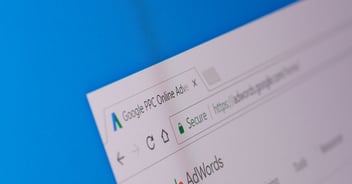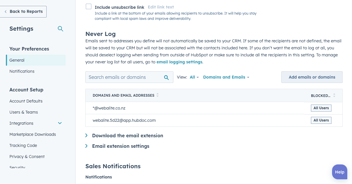Domain Name Disasters - how to avoid them
Your Domain Name is one of the most important, but easily forgotten, parts of your online presence. If one piece of the puzzle is missing – or incorrect – your email can stop, your website can go down and cloud software stops working.
Here’s the definitive guide so you can avoid the stress, pain and cost by managing your Domain Names.
Most people can’t explain to me exactly how a mobile phone works but they’re happy to call and ask a question about domain names. So, to make this easier to understand (if you want to) I’ve made comparisons between your phone, contacts and more.
Before we start why do we need Domain Names?
The internet is an interconnected network of computers that can send and receive information. Each computer has an address (IP Address) on the network. Luckily for us the geeks that created the internet gave us human readable address – your domain name – to make life easier for us mere mortals.
Think of your domain name like a saved contact in your mobile phone. You call your mum by clicking on the contact record in your phone rather than typing your home phone number every time you want to call.
What’s an IP address?
For computers it's much easier, and less ambiguous, to use a number – know as an Internet Protocol Address or IP Address. Until recently an IP Address was just four three digit numbers 192.168.0.1 but, now there are so many device an IP Address is a little more daunting 2001:db8:85a3:8d3:1319:8a2e:370:7348 – now you see why we need domain names.
For computers to know where to look for another specific computer it looks up a Domain Name System to find a DNS Record. This record tells us which computer to send your browser to, or which computer to send your email to.
A saved contact in your phone dials a phone number so you don’t need to remember the phone number. The saved contact would be the Domain Name and the phone number is the IP Address.
Your domain name
A short address used to find your website address, your email server, etc. A domain name has a country or descriptor appended to it known as a Top Level Domain. The most widely known Top Level Domain (TLD) is .com which is short for “commercial”. We primarily use .co.nz which is “commercial” in New Zealand. More recently hundreds of other domain names have been made available like .nz, .website, .beer or my personal favourite .geek
The domain names are like having multiple phone numbers in your phone, for a single contact. You could save a work number, a home number, or a mobile number. The domain name could be ".co.nz" for the New Zealand office and ".com.au" for the Australia office.
What’s a DNS?
A Domain Name System or Domain Name Server (depending on who you ask) holds a distributed list of records for the domain names you are looking for. The list is distributed across the internet so we don't all have to go to the same place for the domain information. This is good because it means we can get the information from a computer near us. However the downside is we need to update that information between the servers when we change the Domain Name Record – this is why there’s a delay when we change the domain name Records.
When you synchronise your Contacts between different devices it’s like using a Domain Name System. You update a phone number in your Contacts on your laptop and your phone is automatically updated too. DNS is a public record synchronised between many computers, not just yours.
Name Server
A Name Server is the definitive source of the domain records for a particular domain name. A server publishes the domain records to other Name Servers. When we make changes to the domain name we make it on the Name Server.
When you enter a Domain Name into a browser your Name Server looks for the domain record in it’s list. If it doesn’t know it asks a more “authoritative” server and keeps asking until it finds the known answer (don’t worry this takes milliseconds).
It’s extremely important to know how to access your DNS Records if you use a different Name Server. Your domain provider can take control back, and use their name servers, but this can take time and does involve risk. When you break a domain name you sometimes don't know immediately and sometimes it can take 24 hours, or more, to fix it.
Using our phone number analogy, when you open your Contacts App on your phone it does a quick check with your account in the cloud and gets the most recent contact details.
Types of Domain Name System Records
There are several different types of DNS Records you can have on your domain:
- MX Records
- A Records
- AAAA Records
- CNAME
- Text Records
Think of each of these records as different types of contact information saved under your contact. You can store multiple phone numbers, addresses and your friends birthday so you don’t forget.
MX Records
Mail Exchange (MX) Records are the important records for your email. When you send an email your mail server looks up the DNS Records, for the domain you’re sending email to, so it knows where to send the email. Your MX Record points to your receiving email servers.
A Records
A Records convert a human readable domain name into a machine readable address known as an IP address. This means we don't have to carry around a bunch of numbers in our heads (ok, this means you don't need to – I can't help it). Using A Records is now considered old fashioned – for websites – because cloud computing has changed the way the internet works. However, you still may want to use A Records for a computer on your network that’s exposed to the internet.
With cloud computing a website can be hosted on one or many computers that scale up or down depending on demand. The host manages this demanding moving your website from server to server as required, therefore it’s best to leave the IP Address management to them so you don't get the lengthy delays updating A Records.
AAAA Records
These are the new version of A Records and holde more information because IP Addresses had to get much longer because we were running out of original IP Addresses. However, for website hosting AAAA Records are still past their “use by” date.
CNAME
A CNAME is a Canonical Name which means when you point your domain name at a CNAME the traffic is redirected to a network rather than a single computer. This means the network can change IP Addresses any time it needs to. The big advantage is that we can then add multiple IP Addresses, so multiple computers can share the load, or we can add or remove IP Addresses when a computer fails (yes – it happens to all of us). By using CNAMEs (not A Records) we don’t need to change the address every time a computer changes. For the geeks reading this it’s known as CNAME Flattening.
Text Records
These are useful notes to prove ownership of a Domain Name. Google allows you to validate domain ownership by giving you a unique code to put in your TXT Record so it can automatically validate you have control of the domain name.
Domain Registration
When you buy a domain name from a reseller they buy the domain from the Registrar and onsell it to you. Usually your reseller manages your domain name for you so you don't have to worry about the geeky stuff.
The Registrar is like the Telco who gives you unique phone number. Even if you buy through a retailer they still get the phone number from a Telco.
There may be times when geeks like us want to take over management of your domain so we can make changes without your domain name provider having to ask you for authority every time we want to make a change. Domain name changes take a while so you want to minimise the delays and get it right the first time.
Originally we used a cheap offshore provider and I regret it.
Why does it take so long to change the domain names?
When you make a change to your domain name it takes a while for the change to be published and distributed around the internet. This process is known as propagation.
If you’re old enough to remember Phone Books (yes, they printed everyone’s phone number in books and sent everyone a copy). A domain name change is like the truck driving around dropping of new phone books – it takes a while for everyone to be updated – luckily we’ve made some progress.
Domain Name Providers
Originally we used a cheap offshore provider and I regret it. The money saved is trivial compared to the time wasted dealing with a low quality provider. To change our domain names to a provider we like, and trust, will be a huge job… so we move each domain, as they are renewed.
Domain Name Renewal
Every year the Domain Registrar renews your domain. Your domain reseller receives an invoice from them and in turn invoices you.
If you don’t renew your domain name your domain name will stop working and your email, website and anything else using your domain name will stop. Dead. And, it’s a nightmare trying to get your domain name resorted.
What happens when you don't renew?
First, everything breaks - your website, your email, any external links to you your server, everything stops. So, consider for a minute if your domain name renewal email address is your domain name then you won't be getting any email so it’s going to make your life more difficult.
Who gets the reminder email for your domain name renewal?
Multimillion dollar websites have stopped – dead – because someone didn’t renew the domain name.
Microsoft forgot to renew hotmail.com in 1999 – opps – and hotmail.co.uk in 2003. Both times everything broke – nobody could log into Hotmail, nobody could send, or receive, email to, or from, a Hotmail Address, the website went down.
You will receive several emails from your domain name provider warning you of the impending doom. Sometimes that email goes to an email address you don't check, or to someone who left the company, it may even go to your spam folder.
If you only do one thing CHECK NOW to make sure your Domain Contact Details are correct.
Once your domain name expires you have a month to pay up before it’s suspended completely. Once it’s suspended completely it will be locked for another 90 days during which time it gets more difficult to get back. After the domain has been locked for 90 days it goes back into the pool of available domain names and anyone can buy it. These records, and states, can be publicly visible which means other people may be watching and waiting for your domain name.
You can watch other domain you want to see if they become available. For example, we watched webalite.com for years before we actually got it. Every year I would set a calendar reminder to check if the domain name had renewed. One year they let it lapse (they’d never published on webalite.com). I set another reminder and watched the domain get locked. After the 90 day wait it took another few weeks before it was released back into the market and we bought it for less than $10 USD.
How to check you Domain Name Contact Details
We use whois.co.nz as a quick check. Simply enter your domain name into the "Whois Search" form and the website will display the details.
Some domains pay to have their contact details hidden. If your domain is hidden please check with the company that invoices your for the domain name every year.
Domain name contacts
What’s the name and address of the Registrant on your domain name? Technically if it’s not you, for your domain name, then you don’t actually own your domain name they do.
It's important your contact information is correct and up to date. The contact information stored with your domain name includes:
- Registrar – the company that sold you the domain.
- Registrant – your company or your name
- Admin – usually the administrator in the company
- Technical – usually a geek like me
- Billing – the accounts person (could be the admin person)
If your domain name service has the option you can protect (hide) your details so you don't get people sending you letters asking you to pay for your domain even though they don't own it.
How long should I register my domain name?
When choosing a Renewal Period some say more is more. According to Google the age of the domain and the Renewal Period is not relevant to search rank. So, for all of our domains we have them on Auto Renew so we get billed every year unless we turn one off.
How many domains should I buy?
Buying a few extra domains can help strengthen your brand online and reduce competition. We've written an article to explain, in more detail, why we think you should be buying more domain names: Domain names – how to protect your intellectual property without spending a fortune on lawyers
www and non-www
Your website usually prefixed with www, or not, depending on your preference. Either option is fine as long as you're consistent and it's set up properly. You need to redirect all traffic to the option you choose. To clarify:
If you use www the redirect all non-www traffic to www
example.com redirects to www.example.com
If you use non-www then redirect all www traffic to non-www
www.example.com redirects to example.com
Take the time to update your preference in Google’s Search Console. Google needs to know what your preferred domain name is. Google considers www and non-www as two different websites – without letting Google know you could be penalised for duplicate content.
Redirections
By adding a Redirection Rule you let browsers and search engines know where to look when you move your domain, a page, or a file. A redirection can be a Temporary (302) Redirection or a Permanent (301) Redirection.
HTTPS vs HTTP
The S is for Secure. This is actually is not part of the domain name but your website server. It’s important that you use HTTPS to make your website and the traffic transmitted to and from your website secure.
You also need to manage redirections between secure and non-secure traffic the same way you need to manage www vs. non-www traffic. You need to check in Google Search Console to make sure your domain is set up correctly.
Next Steps
As you can see there are lots of moving parts – get one part wrong and everything after that point can break.
You can avoid hours – sometimes days – of pain, stress and frustration by clearly documenting your domain names and ensuring the people making any changes are knowledgeable enough to know the implications of what they are doing.
We're working on a tool to help you audit your domain names and identify risk. If you're interested please contact Mike Eastwood using the form below.


